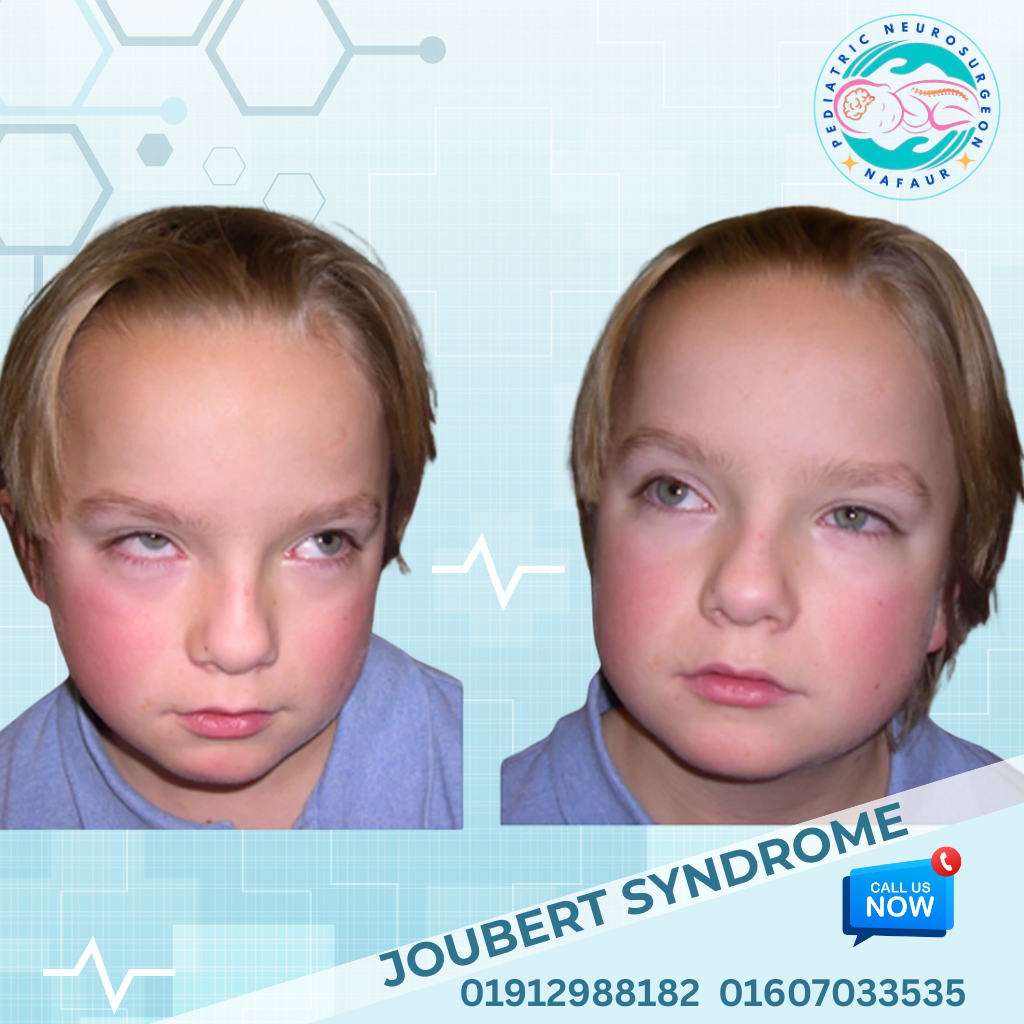Joubert syndrome
Joubert syndrome
Joubert Syndrome is a rare congenital neurodevelopmental disorder characterized by a distinctive brain malformation, primarily affecting the cerebellum and brainstem, which play crucial roles in balance, coordination, and autonomic functions. The condition is best identified by a specific radiological finding called the “Molar Tooth Sign” seen on brain MRI. This syndrome is caused by genetic mutations that affect the function of cilia – microscopic cellular structures – leading to it being classified as a ciliopathy. Children with Joubert Syndrome often present with developmental delays, hypotonia (reduced muscle tone), abnormal breathing patterns, abnormal eye movements, and sometimes seizures, renal abnormalities, or vision impairment. 🌍 Joubert Syndrome in Bangladesh: A Local Context In Bangladesh, many families and general physicians are unaware of Joubert Syndrome due to its rarity and overlap with cerebral palsy-like symptoms. This results in delayed diagnosis, especially in rural or underserved areas. Limited access to high-quality MRI imaging and genetic counseling services further complicates early identification. However, with increasing awareness and availability of MRI scanning, especially in tertiary centers like the National Institute of Neurosciences & Hospital (NINS) and specialized pediatric care at the Bangladesh Paediatric Neurocare Centre, early detection and multidisciplinary intervention are now becoming possible in Bangladesh. 🧬 Causes and Genetic Basis Joubert Syndrome is a genetically inherited disorder, usually in an autosomal recessive manner, meaning both parents must carry a copy of the faulty gene. More than 30 different genes have been associated with Joubert Syndrome. Some children may also have: Joubert Syndrome with renal involvement (nephronophthisis) Joubert Syndrome with hepatic fibrosis Retinal dystrophy or vision loss Multisystem involvement, termed as Joubert Syndrome-related disorders (JSRD) 🧒 Common Symptoms and Clinical Features Symptoms vary widely depending on the specific type and severity, but may include: Developmental delay (motor and speech) Low muscle tone (hypotonia) in infancy, progressing to ataxia (unsteady movements) Abnormal eye movements (oculomotor apraxia or nystagmus) Abnormal breathing patterns in infancy (rapid breathing – hyperpnea or apnea) Intellectual disability Facial dysmorphism (broad forehead, arched eyebrows) Seizures Kidney disease (in some forms) Liver fibrosis or vision loss (in syndromic forms) 🔍 Diagnosis of Joubert Syndrome 1. MRI Brain The hallmark diagnostic feature is the “Molar Tooth Sign” on axial brain MRI, seen in the midbrain area due to malformation of the cerebellar vermis and brainstem. 2. Clinical Examination Pediatric neurologist or neurosurgeon evaluates motor, cognitive, ocular, and autonomic functions 3. Genetic Testing Identifies mutations in Joubert-related genes (e.g., TMEM67, AHI1, CEP290) Helpful for family planning and genetic counseling 4. Other Investigations Ultrasound of kidneys to assess for nephronophthisis Ophthalmologic exam for retinal dystrophy Liver function tests and abdominal ultrasound 🛠️ Management and Neurosurgical Considerations While there is no cure for Joubert Syndrome, a multidisciplinary approach can significantly improve the child’s developmental progress and quality of life. 1. Neurosurgical Support For children with associated hydrocephalus, a Ventriculoperitoneal (VP) shunt or Endoscopic Third Ventriculostomy (ETV) may be required Management of seizures in coordination with pediatric neurology Surgical correction of vision issues or breathing abnormalities, if required 2. Therapy and Rehabilitation Physiotherapy and occupational therapy for motor skills Speech and language therapy Vision and hearing support services Behavioral and special education programs for cognitive and learning needs 3. Medical Monitoring Regular kidney function tests, eye exams, and liver assessments Pediatric nephrology and ophthalmology consultation as needed 4. Family and Genetic Counseling High chance of recurrence in future pregnancies if both parents are carriers Genetic counseling and prenatal screening are strongly advised 🔄 Prognosis The outcome of children with Joubert Syndrome varies depending on: The extent of brain involvement Presence of associated organ dysfunction (e.g., kidneys, liver, eyes) Early intervention and rehabilitation With proper supportive care, many children can achieve basic developmental milestones, communicate, and engage in daily activities. However, some may require lifelong support due to severe disabilities. 👨⚕️ Why Choose Dr. Md. Nafaur Rahman? Expert in diagnosing and managing rare pediatric brain malformations Provides early MRI evaluation, surgical care, and rehabilitation planning Leads a team offering integrated pediatric neurological care at NINS and Bangladesh Paediatric Neurocare Centre Provides genetic counseling, long-term follow-up, and family support Highly experienced in managing associated hydrocephalus, seizures, and developmental delays 📞 Schedule a Consultation Dr. Md. Nafaur Rahman Assistant Professor, Department of Pediatric Neurosurgery, NINS Chief Consultant, Bangladesh Paediatric Neurocare Centre 📞 For Appointment: 01912988182, 01607033535 🌐 Website: www.neurosurgeonnafaur.com












